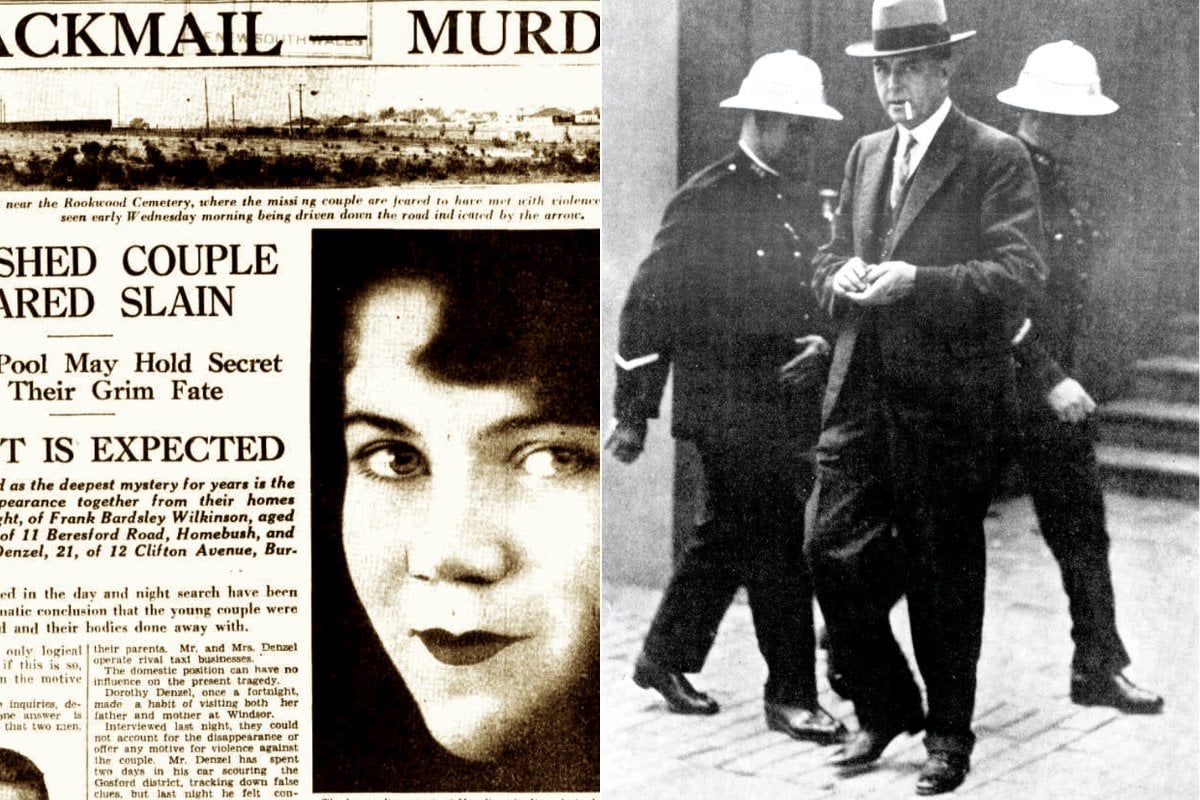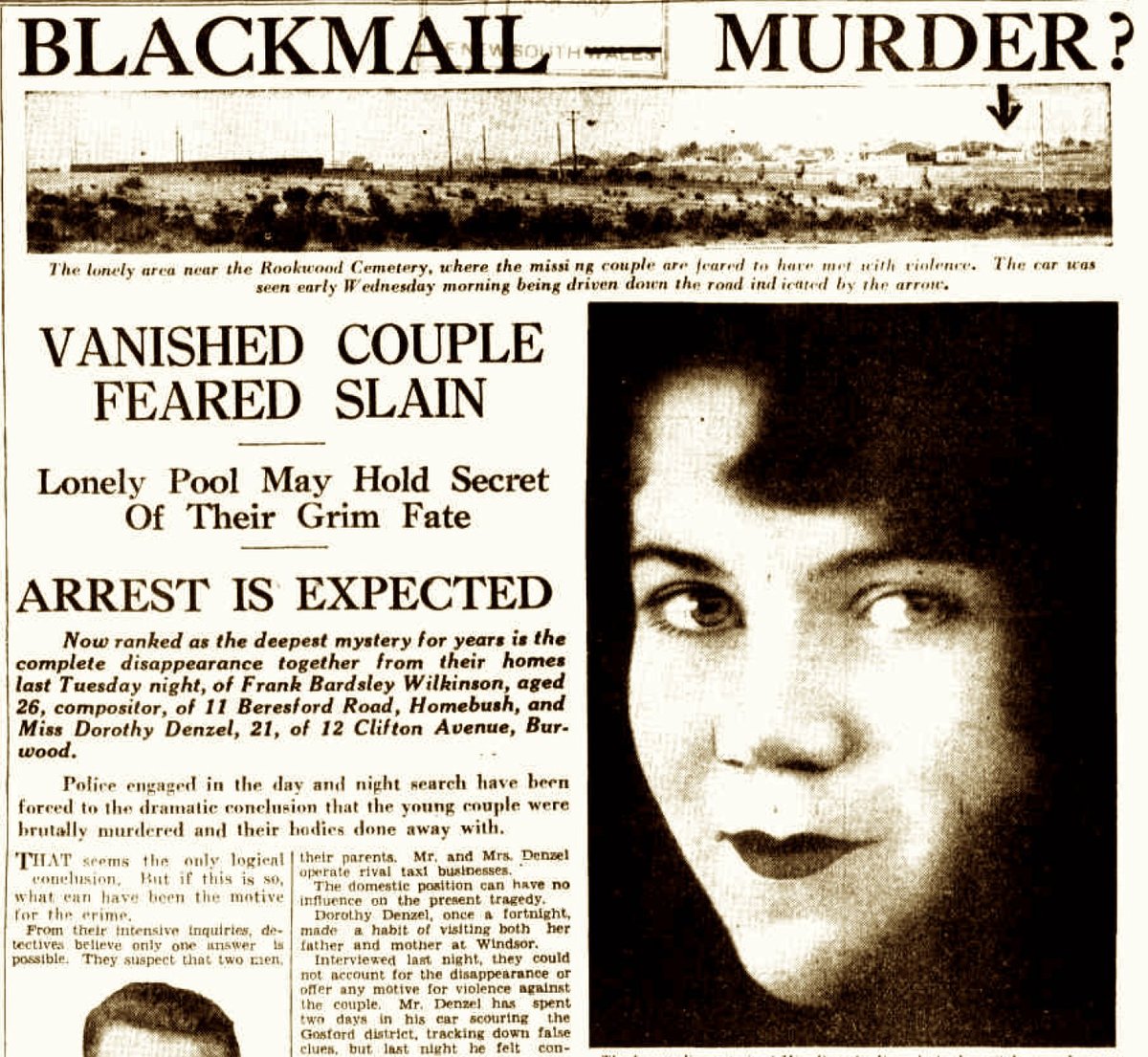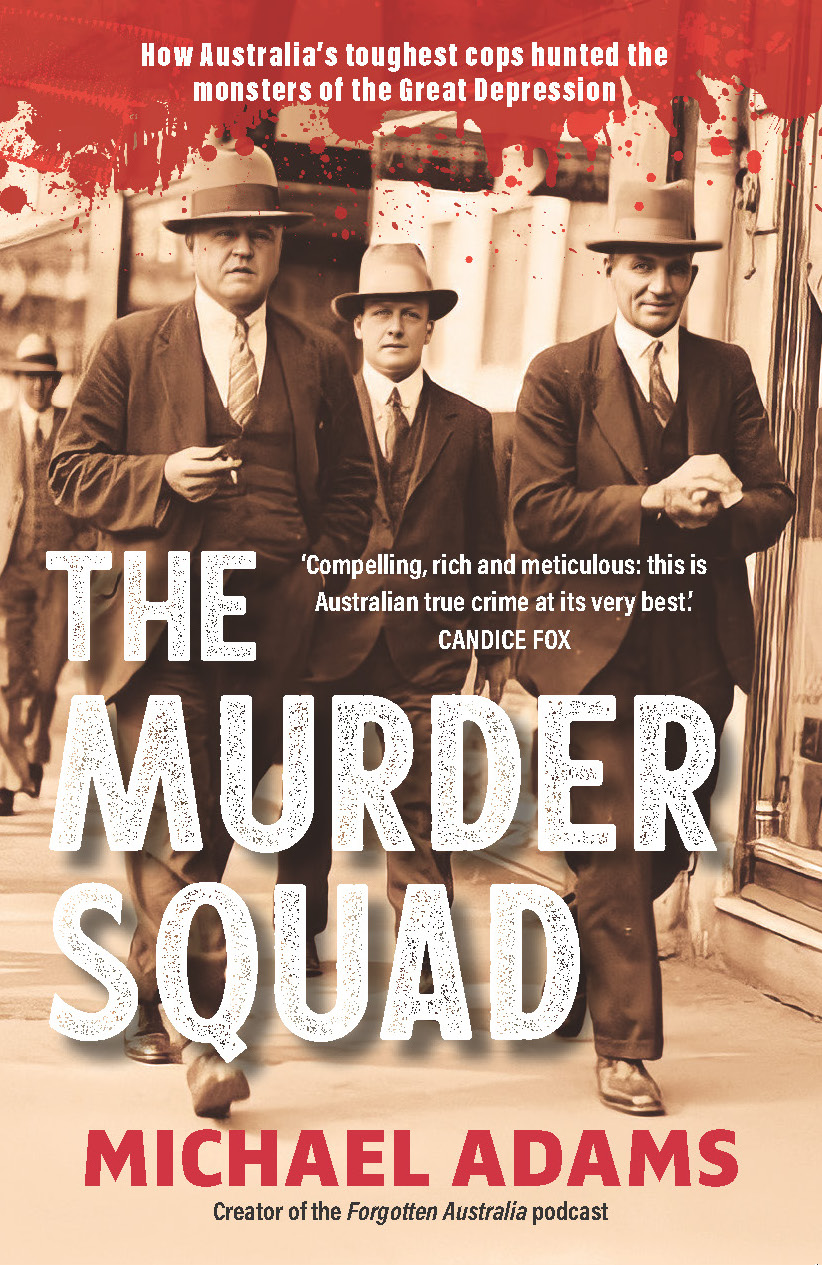
The following is an edited extract from The Murder Squad by Michael Adams. Hear more about this case on Mamamia's True Crime Conversations.
At around 8pm on Tuesday 5 April 1932, Frank Wilkinson and Dorothy Denzel went for a drive in his red Alvis sports car.
This handsome couple were doing all right despite the Depression. Frank, 26, lived with his parents in Homebush, and worked as a compositor for The Sun. Dorothy, 21, previously a teenage beauty queen, had in 1931 lost her job as a GPO telephonist, but had since become a live-in nursemaid to a Burwood family.
After picking her up from this residence, Frank drove them towards a quiet spot near a Strathfield park that was popular with young couples.
There was plenty to talk about. In sporting news, everyone was still in awe of Phar Lap, and excited to know when he'd race for the first time in the United States. The Sydney Harbour Bridge had been opened with much fanfare - and the obnoxious intervention of fascist New Guardsman Francis de Groot - just a fortnight earlier.
Just days ago, Frank had been at the wheel of the Wilkinson family car when they all drove across the mighty iron 'coathanger' together for the first time.
The lovers in the Alvis on Tuesday night were both sensible and hardworking young people. They were close to their families. That made it immediately concerning that, by the next morning - as radio broadcasts announced the sudden shock death of Phar Lap - they hadn't returned from their drive or slept in their respective beds.


